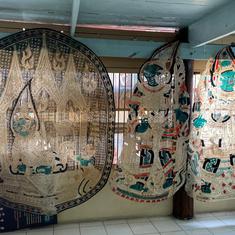In the third episode of the series on raag Kafi (you can read parts one and two here and here), we begin with Vande Nandakumaram, an invocation in Sanskrit to the lord Krishna.
Vocalist Faiyaz Khan, whose name is synonymous with the Agra gharana, brings to a composition set to Teentaal – a cycle of 16 matras – elements of thumri, but with a difference. Pukaar, the utterance of a heart-wrenching call to the beloved that is so integral to thumri singing, comes across here as a fervent prayer to the divine. Faiyaz Khan also employs tappa-like taan patterns that are short and swift, giving them an unpredictable quality.
The inimitable Begum Akhtar sings a hori thumri in Kafi set to Deepchandi, a cycle of 14 beats. The presentation is part of a longer recital recorded by Doordarshan in the presence of an audience. As is the case with horis, the song-text describes the play of colour indulged in by Kanhaiya, another name for Krishna, during the festival of Holi.
Akhtar heightens the magic of the komal gandhar or the flat third by deviating from the formal structure of Kafi to introduce the shuddha gandhar or natural third and then descends chromatically from the shuddha gandhar to the komal variety in a manner that tantalises the listener.
The rendition is brought to a climactic end with the laggi section that highlights the tabla. The taal changes from Deepchandi to the eight-matra Kaherva. Several laggis or rhythmic varieties, involving permutations and combinations of small phrases typically associated with the tabla accompaniment to thumri and allied forms, are presented alternatingly in dugun or double time.
Akhtar’s singing floats effortlessly over this section, almost suggesting a free-flowing melodic elaboration. However, she is obviously aware of the rhythmic cycle and keeps in tandem without singing the first line as a metronomic device.
The sarangi accompaniment is provided by Shakoor Khan, while Ramzan Khan is on the tabla.










